The innovative application of ribbon slitting machine in the production of new energy battery labels is mainly reflected in improving label performance, adapting to the needs of special materials, optimizing production efficiency and meeting the strict standards of the new energy industry. The following are the specific innovations and application analysis:
1. Adapt to high weather-resistant label materials
• Challenge: New energy battery labels need to withstand extreme environments such as high temperatures, electrolyte corrosion, and ultraviolet rays.
• Innovative Applications:
◦ The slitter can precisely cut chemically resistant ribbons (such as coated ribbons or resin-based ribbons) to ensure that the label does not fade in the electrolyte environment.
◦ Support slitting of high-temperature resistant materials (such as polyimide labels) to meet the needs of high-temperature operating scenarios of batteries.
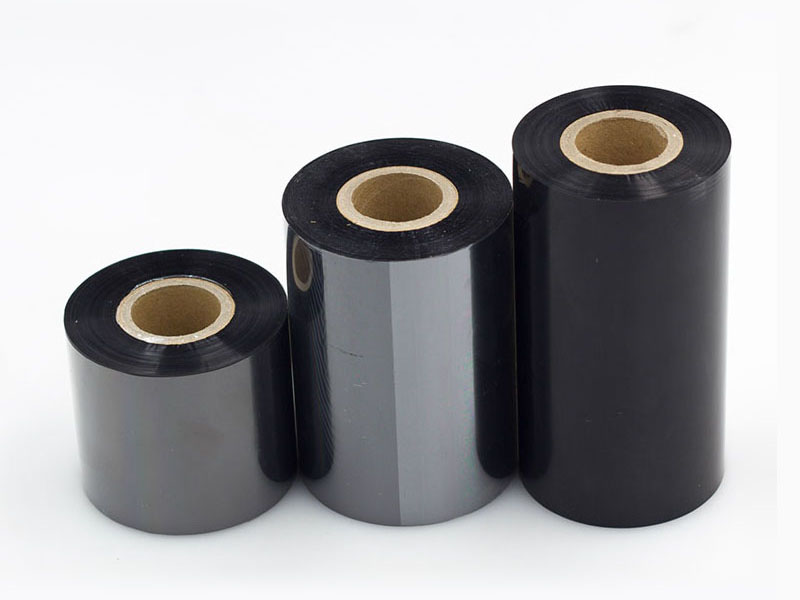
2. High-precision slitting and edge processing
• Challenge: Battery labels require extremely tight tolerances (±0.1mm) to avoid print shifts or poor fit.
• Innovations:
◦ Laser-guided slitting or CNC slitting system is used to achieve micron-level accuracy.
▪ Automatic tension control reduces the tensile deformation of the material during slitting, and ensures the perfect fit between the label and the cell.
3. Intelligent and automated integration
• Innovative Applications:
◦ The integrated visual inspection system monitors the slitting quality in real time and automatically rejects defective ribbon segments.
◦ Connected to the MES system via IoT, the slitting parameters (width, tension) and the subsequent printing/labeling process can be co-optimized.
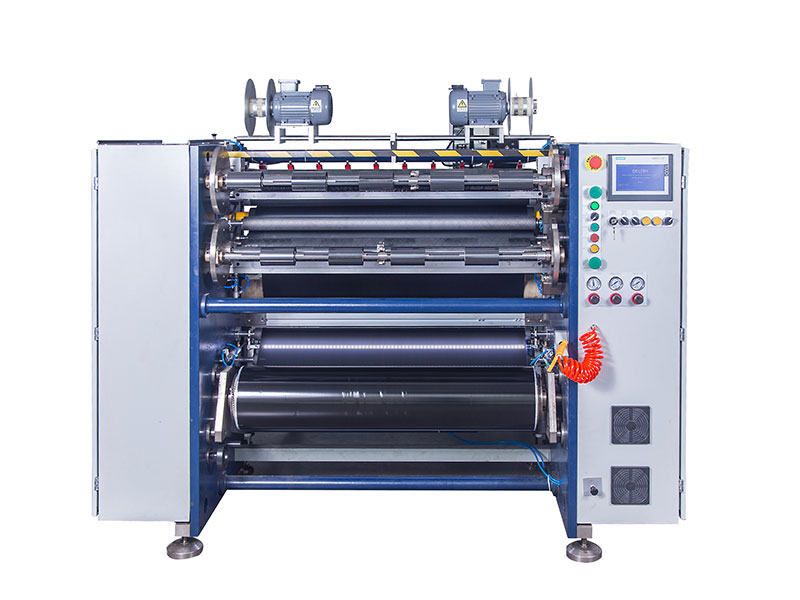
4. Environmental and sustainability improvements
• Industry demand: The new energy industry emphasizes green production.
• Innovative solutions:
◦ The slitter is compatible with solvent-free ribbons or bio-based materials to reduce VOC emissions.
◦ Automatic recycling system for slitting waste to improve material utilization.
5. Customized slitting solutions
• Application Scenarios:
◦ For different shapes such as cylindrical batteries and pouch batteries, the slitter can quickly switch between special-shaped ribbons (such as narrow or segmented ribbons).
◦ Support variable width slitting of 2D code/barcode labels to meet battery traceability needs.
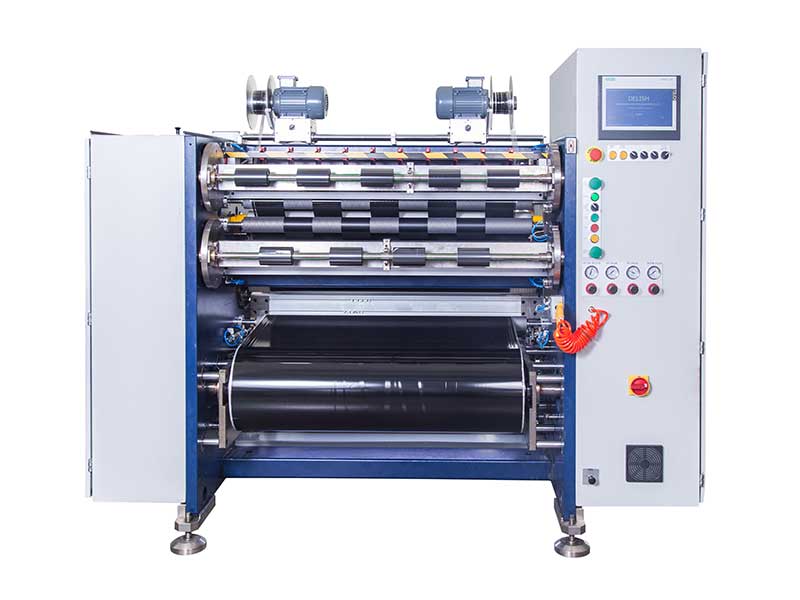
6. Improve printing efficiency and durability
• Innovative Design:
◦ The slitted ribbon is matched with a high-speed printhead (such as a thermal transfer printer) to increase the batch printing speed of battery labels.
◦ Optimize ribbon coating uniformity to ensure that the label does not blur or fall off during the battery lifecycle.
7. Security Compliance Assurance
• New energy standards: UL/CE certification, flame retardant requirements, etc.
• Slitter Role:
◦ The slitting process controls the consistency of the thickness of the ribbon to avoid uneven flame retardant coating of the label after printing.
◦ Cooperate with halogen-free material slitting to meet environmental protection regulations.
Case Reference
• A power battery manufacturer: After adopting a ribbon slitting machine equipped with AI deviation correction system, the label defect rate decreased by 60% and the production efficiency increased by 30%.
• Energy storage battery labeling: Solve the problem of embrittlement of outdoor energy storage batteries by slitting low-temperature resistant ribbons (-40°C).
Future Trends
• Composite slitting technology: slitting multiple layers of materials (such as label + insulating film) at the same time.
• Digital twin applications: Virtual slitting simulation optimizes actual production parameters.
Through the above innovations, the ribbon slitting machine has been upgraded from a simple processing equipment to one of the core links of new energy battery label production, which directly affects the reliability, production efficiency and compliance of the label.



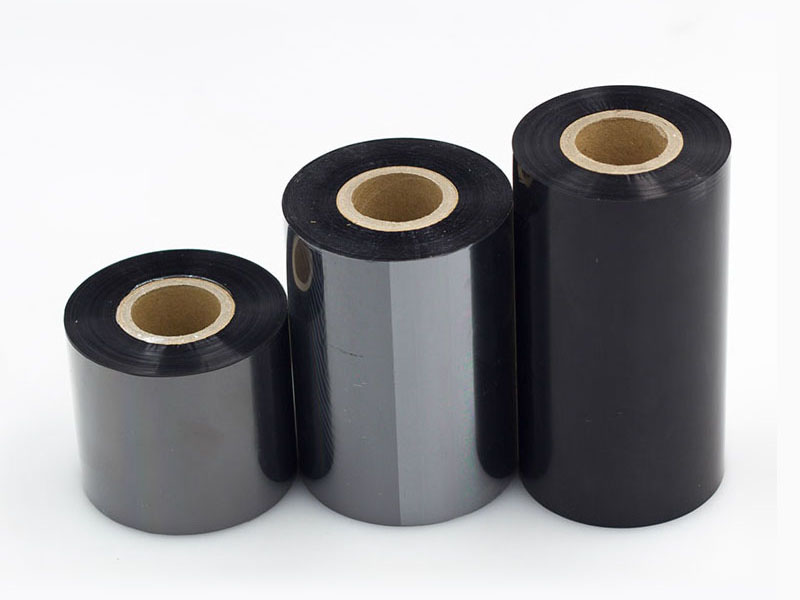
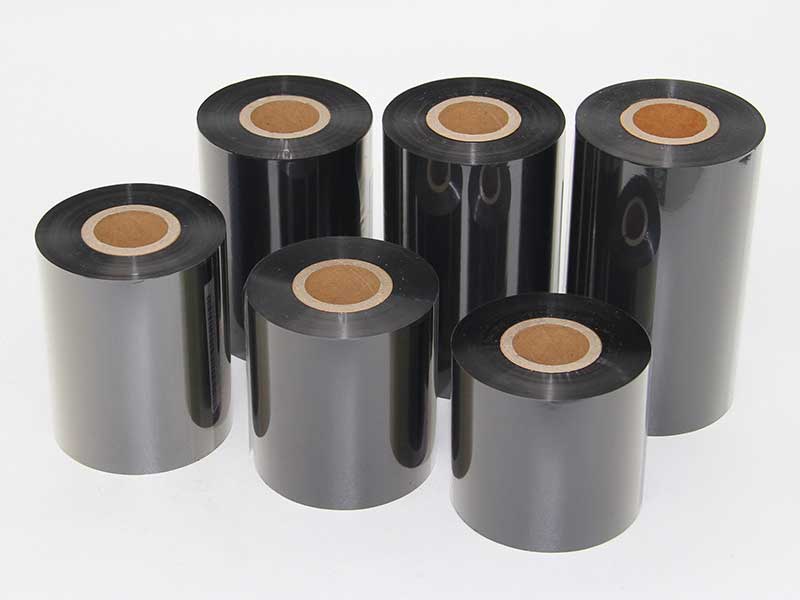
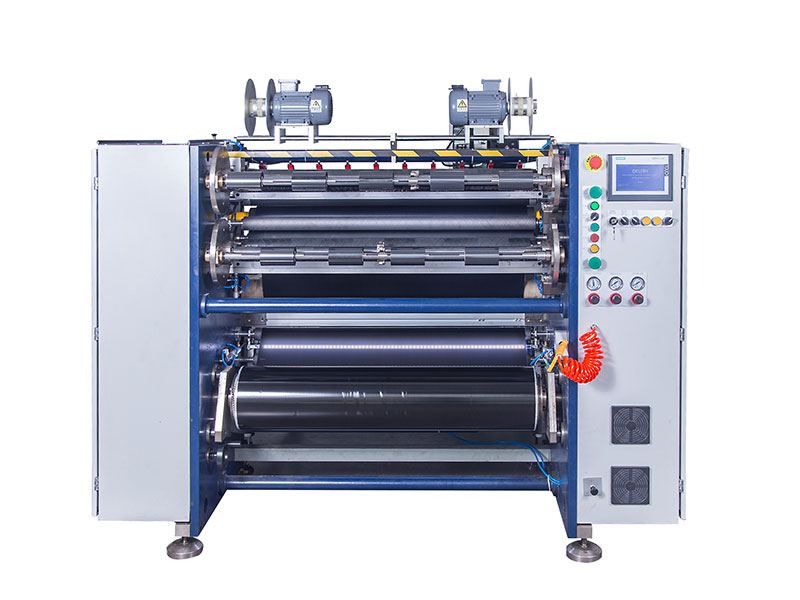
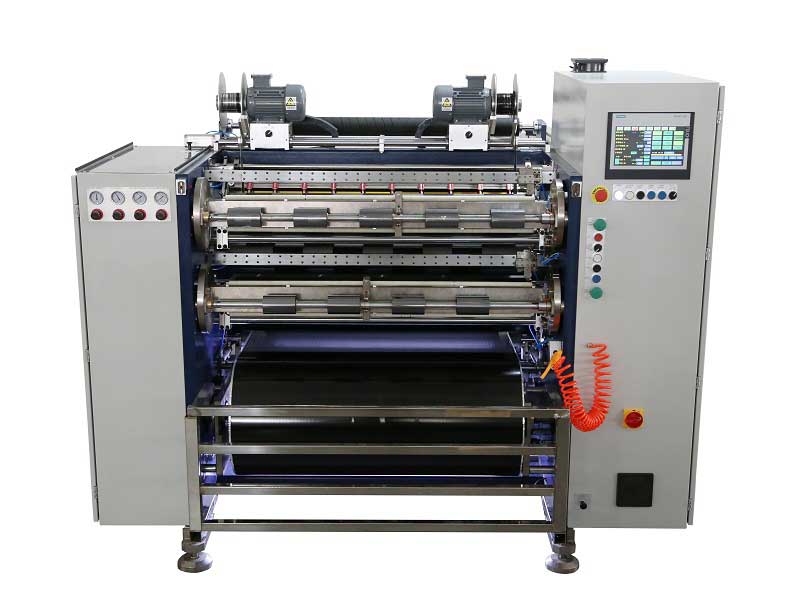 Automatic Thermal Transfer Ribbon Slitting Machine RSDS8 H PLUS
Automatic Thermal Transfer Ribbon Slitting Machine RSDS8 H PLUS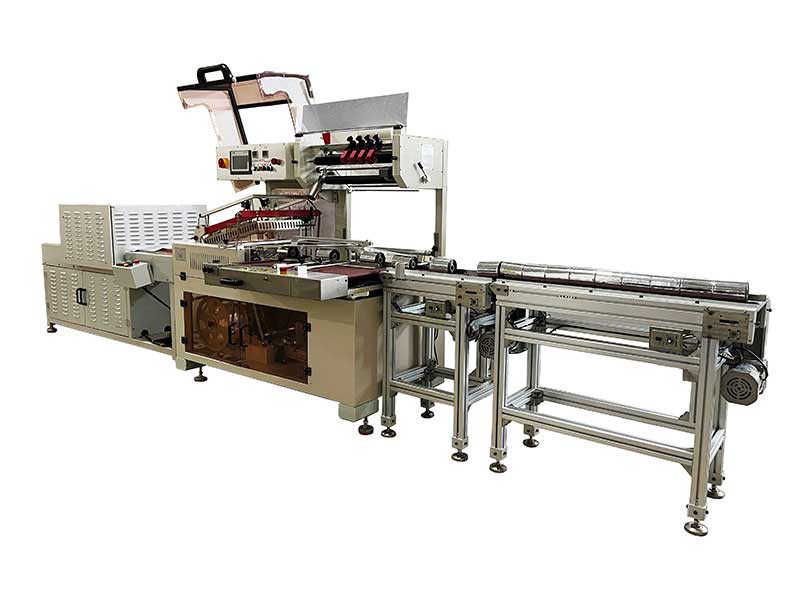 Thermal Transfer Ribbons Packaging Machine
Thermal Transfer Ribbons Packaging Machine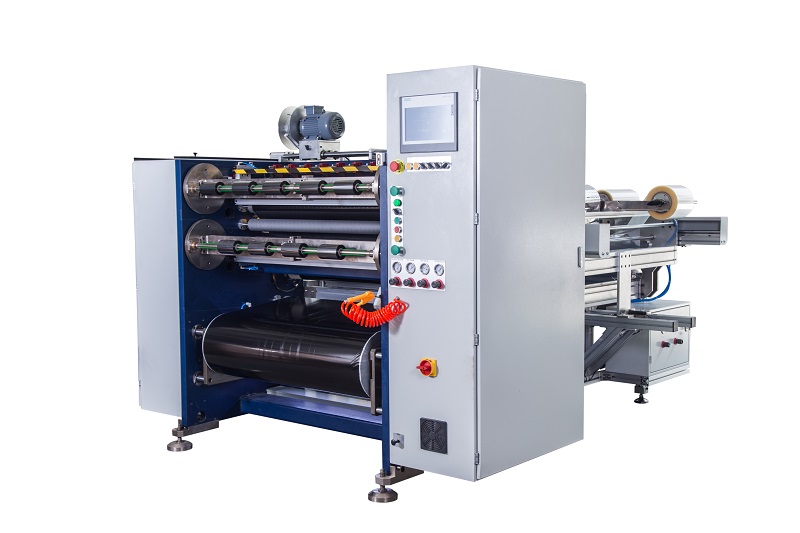 Semi Automatic Thermal Transfer Ribbon Slitting Machine RSDS5 PLUS
Semi Automatic Thermal Transfer Ribbon Slitting Machine RSDS5 PLUS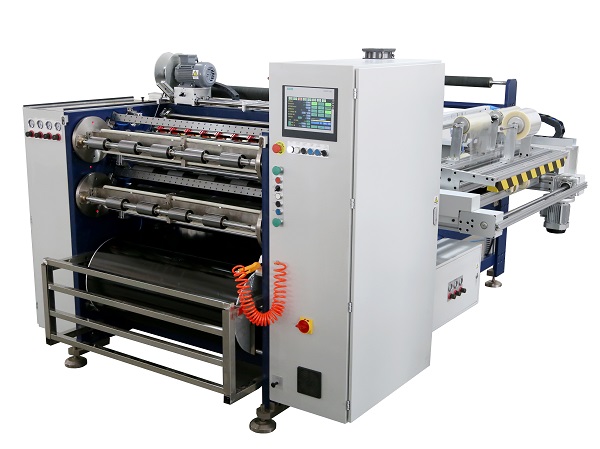 Automatic Thermal Transfer Ribbon Slitting Machine RSDS8 PLUS
Automatic Thermal Transfer Ribbon Slitting Machine RSDS8 PLUS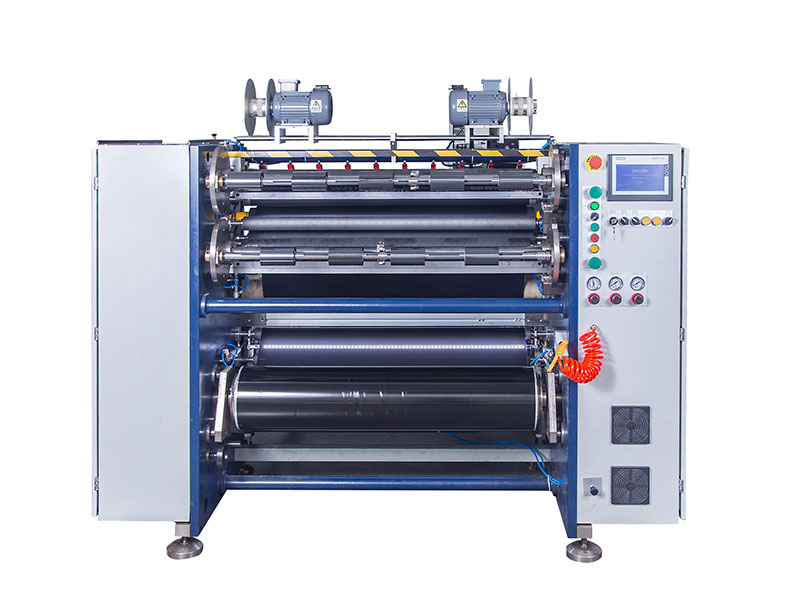 Ribbon Slitting Machine
Ribbon Slitting Machine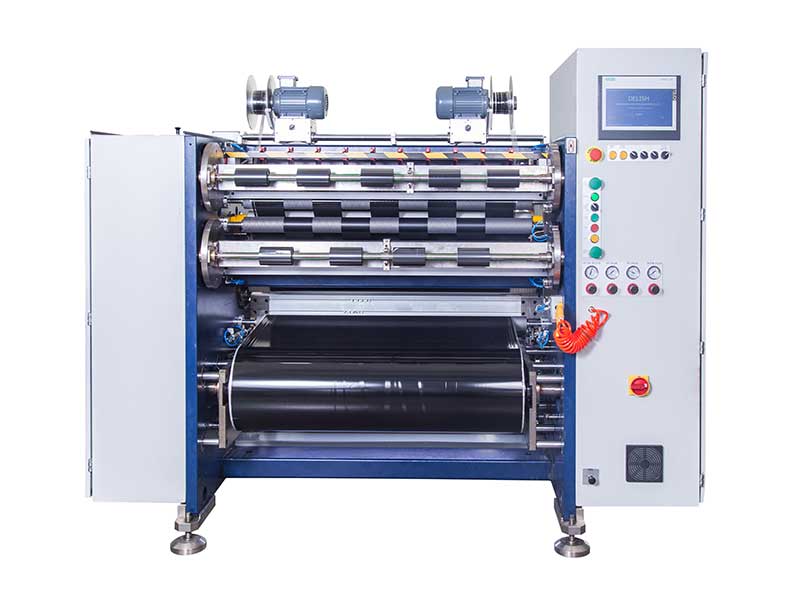 TTR Slitting Machine
TTR Slitting Machine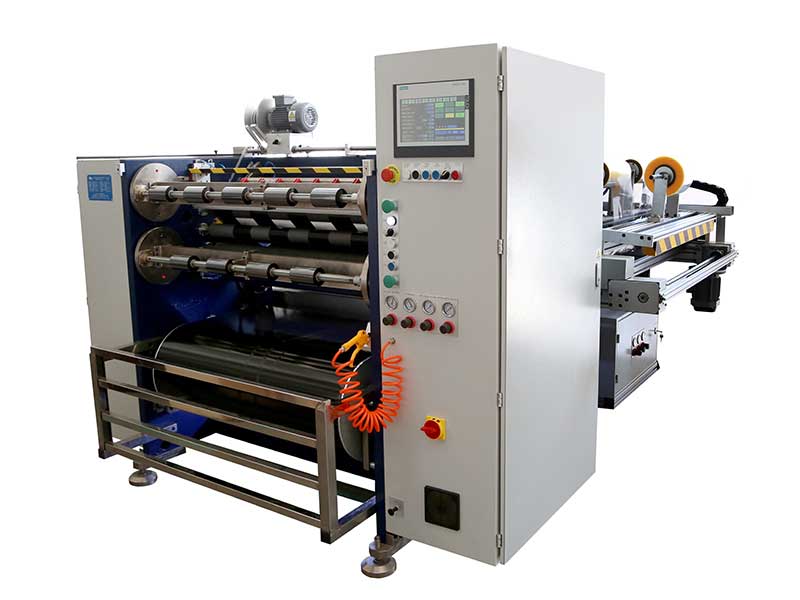 Automatic Thermal Transfer Ribbon Slitting Machine RSDS6 PLUS
Automatic Thermal Transfer Ribbon Slitting Machine RSDS6 PLUS

